Past and Future on Shanghai’s Famous Bund
Shanghai’s waterfront is synonymous with its history. The archetypal image of Old Shanghai is a view of the city’s former front door, the storied Bund along the Huangpu River, lined with ostentatious colonial banking and commercial buildings, symbols of Shanghai’s bizarre history of foreign control and profiteering. For New Shanghai, you simply have to turn your view across the River to Pudong, where a profusion of skyscrapers have sprouted on what was docks, warehouses and fields only 15 years ago, giving Shanghai as modern a skyline as anywhere.
Historically, the Bund was characterized by having an old port’s chaos of ships, wharfs, docks and cargo on the water side, and the dignified solidity of the city’s prime address on the other. In the past, this waterfront vibrancy tended to be the rule rather than the exception, but Shanghai took the activity to a delightful extreme with streetcar routes and plenty of promenaders on both sides of the street. Even so, you can clearly see parallels with historic views along the Old Port in Montreal, and doubtless many other cities.
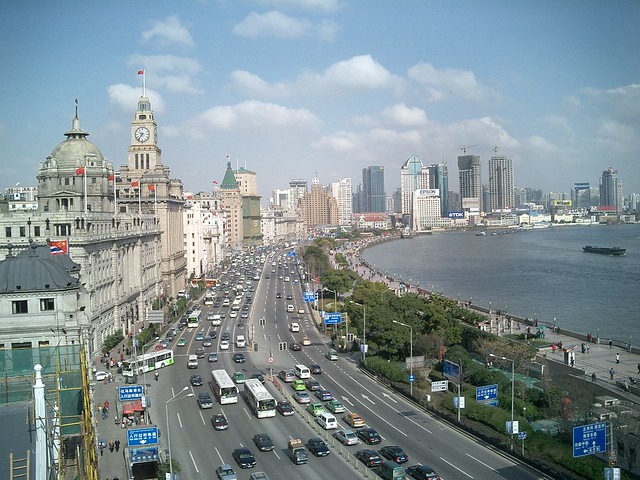 Source
SourceThe Bund in 2006: 10 or 11 lanes of uncrossableness, including a raised median to stop anyone crazy enough to try jaywalking - I'm not sure if the trees will be saved
Unfortunately, Shanghai’s waterfront Bund is today a pale shadow of its former self. As in so many other cities, the waterfront was eventually seen as the easiest place to put a major cross-town traffic artery – in this case, at grade, though with a large flyover (now demolished) connecting to an elevated expressway. Ten or eleven lanes of through traffic later, the waterfront promenade that is such a major tourist attraction is as separated from the famous buildings that line the Bund (and the narrow sidewalk in front of them) as possible. At-grade pedestrian crossings are essentially outlawed for the entire length of the historic area, with pedestrians forced into underground tunnels to cross to the waterfront (a temporary pedestrian overpass during construction shows how wonderful it is to see what you’re crossing). Exasperating the strange and tenuous connection between the two sides is the elevation of the waterfront promenade a few metres above street level (something that seems to have been done for flood control reasons).
Happily, changes are afoot that will be attempting to address some of the Bund’s deficiencies. Firstly, the major traffic artery is being placed in a tunnel below ground level in a huge engineering project which will leave only four lanes of traffic at grade. The Bund will be streetscaped as an urban avenue, with at-grade pedestrian crossings, trees and a much stronger connection between the two sides of the street. The raised promenade along the river will remain elevated (I presume that flood control precludes any change to that), but a series of ramps will tie it much more closely to the street and grade level of the buildings of the Bund. Clearly the proposals will be a strong step in the right direction for an urban locale that is high on the agenda for every tourist that visits Shanghai. One also hopes that reconnecting the waterfront promenade to the city this way will also encourage ordinary Shanghainese to visit more easily.
Still though, it’s hard not to be a little nostalgic for the chaos, bustle and business of the old Bund. Somehow a tourist-oriented waterfront promenade choked with package tourists, silly crap for sale to tourists, and potential scams and scammers to watch out for doesn’t quite compare. Hopefully the revitalization scheme, if successful, will help to add a little more action simply by tying the promenade back to the city and encouraging a wider diversity of users. However, a view of what might have been can be glimpsed through a couple of photos found on Flickr showing the Bund in 1983 and 1984 (see below) – a beautiful tree-lined boulevard that looks like it might have compared well to the great waterfronts of the world. It’s rather funny that today Shanghai is desperately trying to get back to where it was 25 years ago when it comes to its most recognizable and impressive urban space. It’s also amusing that despite a building boom of unbelievable scale, and skyscrapers in lots of silly shapes and sizes, the waterfront that has defined the image of the city since the establishment of the international concessions continues to outclass them all.
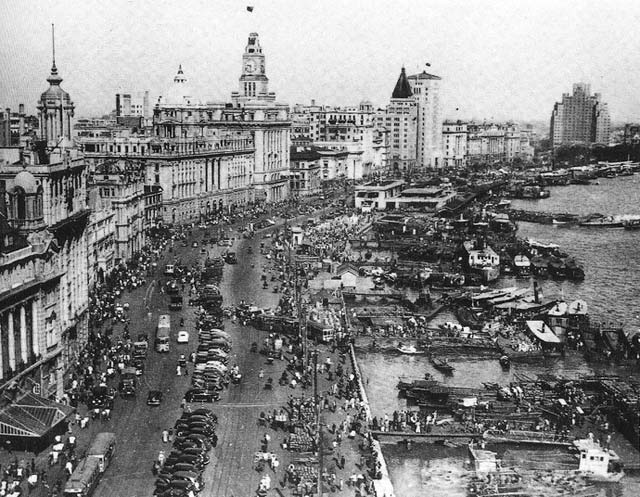
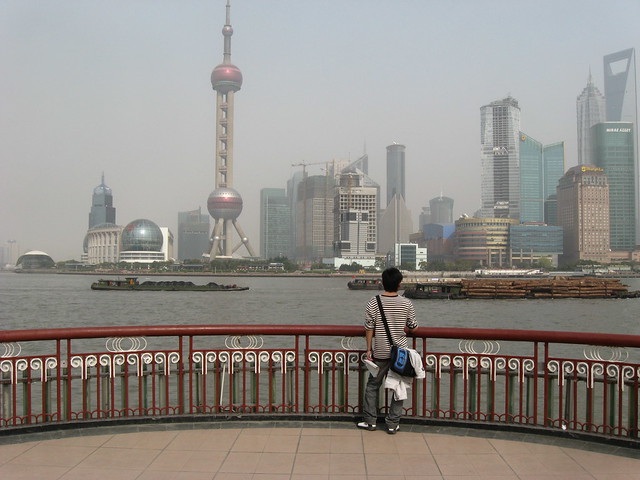
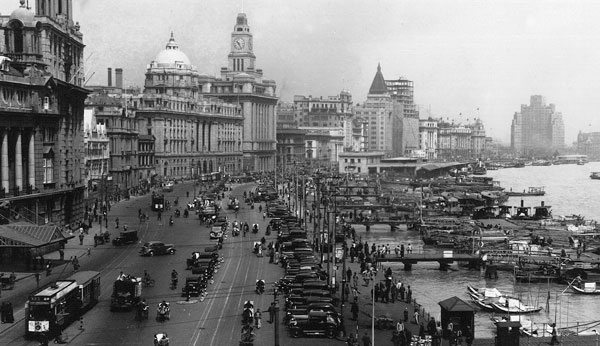
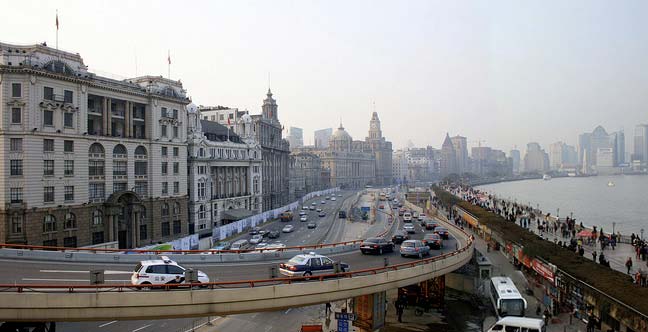
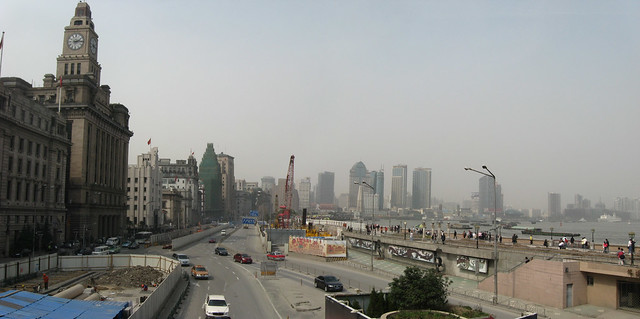
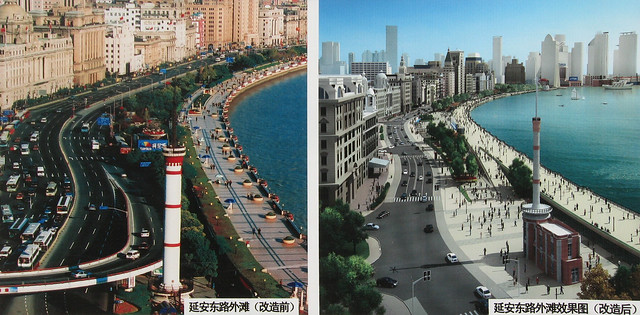
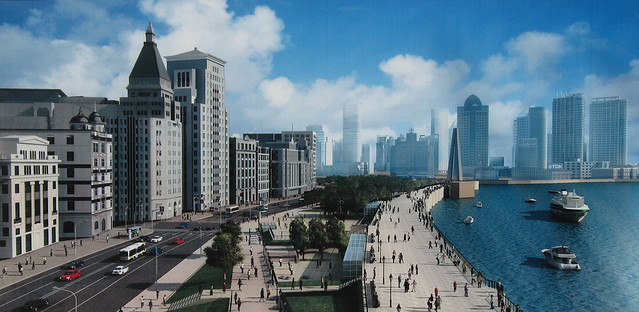
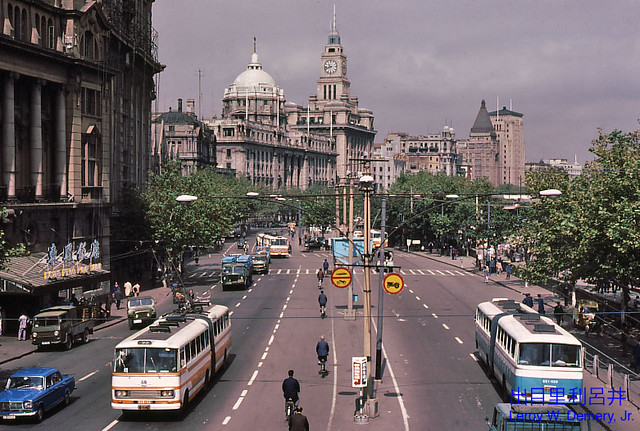
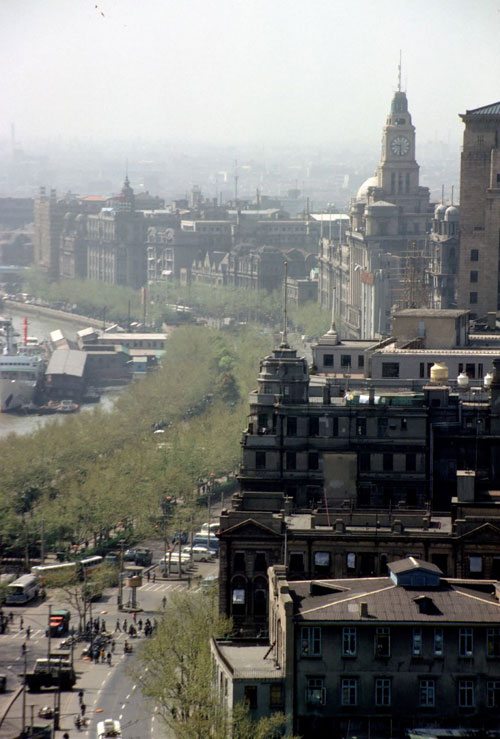

4 Comments so far
Leave a comment
This is an enlightening photohistory of the Bund. Strangely, during my time in Shanghai I never considered the fact that the Bund’s entire image had changed so many times over the past century. I’ve always been more concerned with the changes that happened on the inner streets of the city. But you’re right, the Bund is Shanghai’s face, and it’s incredibly ironic that it was so nice in the eighties, but needs reworking today. I do remember that it was a rather terrible place for flânerie (which is all the more surprising, because it’s only my enthusiasm for Shanghai as an urban environment that brought me to learn the word ‘flânerie’in the first place). Very astute of you to point this out – thank you!
By Alia on 06.23.09 9:48 pm
GREAT research of the Bund photohistory! Loved it!
By Cindy Lo on 09.02.09 3:04 am
this 1984 image is new to me. wow!
By delirious on 12.02.09 12:05 am
Wow seeing the change in the surrounding area of the bund… I personally think the future proposal of the bund is too much… China is going over board with modernizing everything… some things like the bund should be left unchanged like those historical buildings… the streets, and the water front I understand, but the historical buildings and their design needs to stay because it symbolizes Shanghai and the history that the country and city has went through…
By John on 11.30.15 2:22 am
Leave a comment
Line and paragraph breaks automatic, e-mail address never displayed, HTML allowed:
<a href="" title=""> <abbr title=""> <acronym title=""> <b> <blockquote cite=""> <cite> <code> <del datetime=""> <em> <i> <q cite=""> <s> <strike> <strong>